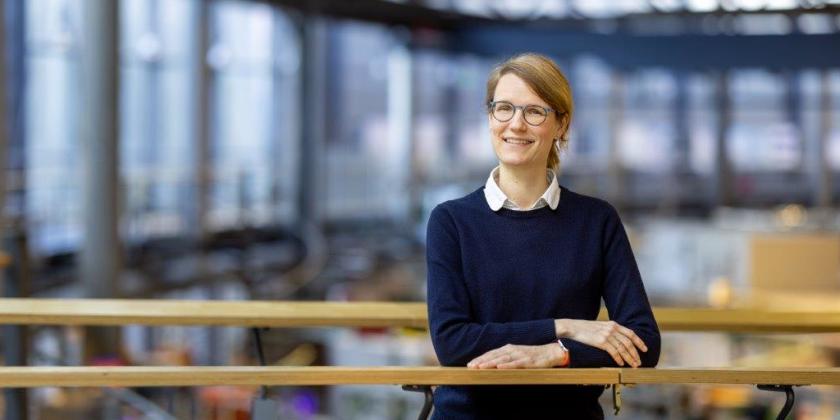TU Berlin appoints Renske van der Veen as professor

Dr. Renske van der Veen investigates catalytic processes at BESSY II, which are crucial for the production of green hydrogen, among other things. © M: Setzpfandt/HZB
For the past two years, Dr Renske van der Veen has led a research group in time-resolved X-ray spectroscopy and electron microscopy at HZB. Her research focuses on catalytic processes that enable, for example, the production of green hydrogen. She has now been appointed to a S-W2 professorship at the Institute of Optics and Atomic Physics (IOAP) at the Technische Universität Berlin.
Dr Renske van der Veen specialises in ultrafast X-ray methods, which she uses at BESSY II to study the fast processes involved in catalysis. Van der Veen is also contributing her expertise to the scientific requirements profile for the successor X-ray source BESSY III.
Renske van der Veen studied at the ETH Zurich and completed her PhD at the École Polytechnique Fédérale de Lausanne (EPFL). She went on to do research at the California Institute of Technology, the Max Planck Institute for Biophysical Chemistry in Göttingen and the University of Illinois, where she was also an assistant professor. She has received the Alexander von Humboldt Foundation's Sofja Kovalevskaja Award and the Packard Fellowship for Science and Engineering.
arö
https://www.helmholtz-berlin.de/pubbin/news_seite?nid=24648;sprache=en
- Copy link
-
The twisted nanotubes that tell a story
In collaboration with scientists in Germany, EPFL researchers have demonstrated that the spiral geometry of tiny, twisted magnetic tubes can be leveraged to transmit data based on quasiparticles called magnons, rather than electrons.
-
Ernst Eckhard Koch Prize and Innovation Award on Synchrotron Radiation 2025
At the 27th BESSY@HZB User Meeting, the Friends of HZB honoured the dissertation of Dr Enggar Pramanto Wibowo (Friedrich-Alexander University Erlangen-Nuremberg). The Innovation Award on Synchrotron Radiation 2025 went to Prof. Tim Salditt (Georg-August-University Göttingen) and Professors Danny D. Jonigk and Maximilian Ackermann (both, University Hospital of RWTH Aachen University).
-
Bright prospects for tin perovskite solar cells
Perovskite solar cells are widely regarded as the next generation photovoltaic technology. However, they are not yet stable enough in the long term for widespread commercial use. One reason for this is migrating ions, which cause degradation of the semiconducting material over time. A team from HZB and the University of Potsdam has now investigated the ion density in four different, widely used perovskite compounds and discovered significant differences. Tin perovskite semiconductors produced with an alternative solvent had a particular low ion density — only one tenth that of lead perovskite semiconductors. This suggests that tin-based perovskites could be used to make solar cells that are not only really environmentally friendly but also very stable.
